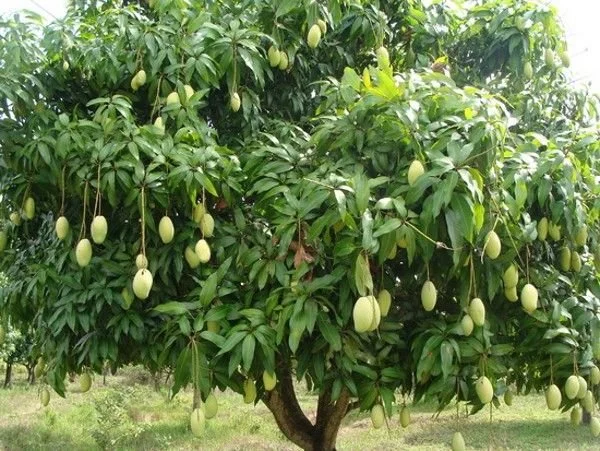Mangoes, often referred to as the “king of fruits,” are not only delicious but also a lucrative crop for those looking to enter the agribusiness market. Cultivating mangoes can be a rewarding venture, but it requires careful planning and meticulous care. This guide will cover everything from planting to harvesting, providing you with the knowledge to build a profitable mango business.
1. Selecting the Right Mango Variety
1.1. Market Research
Before planting, conduct thorough market research to determine which mango varieties are in demand in your target market. Popular commercial varieties include:
Alphonso: is known for its rich flavor and creamy texture. Ideal for export markets.
Haden: Versatile and disease-resistant with a tangy flavor.
Kent: Large, juicy, and low-fiber, making it perfect for fresh consumption and processing.
Tommy Atkins: Hardy and tolerant to shipping, commonly used in processed products.
1.2. Climate and Soil Requirements
Mango trees thrive in tropical and subtropical climates. They need:
Temperature: Minimum of 60°F (15°C) and maximum of 100°F (38°C). Avoid frost.
Rainfall: 40-100 inches annually, with a dry period for flowering.
Soil: Well-draining soil with a pH of 5.5 to 7.5. Avoid heavy clay or saline soils.
2. Planting Mango Trees
2.1. Site Preparation
Land Clearing: Remove weeds, rocks, and debris.
Soil Preparation: Improve soil fertility with organic matter. Test soil and amend with lime or sulfur as needed.
2.2. Planting Procedure
Spacing: Space trees 30-40 feet apart to allow for their large canopy and root system.
Planting Hole: Dig a hole twice the width of the root ball and the same depth. Mix soil with compost or well-rotted manure.
Planting: Place the tree in the center of the hole, ensuring the graft union is above the soil level. Fill the hole with soil, tamp down lightly, and water thoroughly.
2.3. Initial Care
Watering: Water deeply once a week during the first year. Reduce frequency as the tree matures.
Mulching: Apply mulch around the base to retain moisture and suppress weeds.
Fertilizing: Use a balanced fertilizer (e.g., 10-10-10) during the growing season. Follow manufacturer recommendations
3. Ongoing Care
3.1. Pruning and Training
Formative Pruning: Shape the tree to develop a strong structure. Remove any weak or crossing branches.
Maintenance Pruning: Remove dead or diseased wood and suckers. This improves air circulation and reduces disease risk.
3.2. Pest and Disease Management
Pests: Monitor for mango weevils, scales, and aphids. Use organic or chemical treatments as necessary.
Diseases: Watch for powdery mildew, anthracnose, and bacterial black spot. Apply fungicides and practice good sanitation.
3.3. Irrigation Management
Watering Schedule: Adjust watering based on rainfall and growth stage. Ensure consistent moisture during dry periods.
Drip Irrigation: Consider installing a drip system for efficient water use and to minimize water stress.
3.4. Nutrient Management
Fertilization: Apply a specialized mango fertilizer with higher potassium and magnesium during flowering and fruit set.
Soil Testing: Regularly test the soil to check for nutrient deficiencies and adjust fertilization accordingly.
4. Harvesting Mangoes
4.1. Maturity Indicators
Color Change: Depending on the variety, mangoes will change color as they ripen. For example, Alphonsos turn golden-yellow.
Firmness: Gently press the fruit. It should give slightly when ripe.
Aroma: Ripe mangoes emit a fruity fragrance.
4.2. Harvesting Techniques
Hand Harvesting: Use pruning shears or clippers to cut the fruit from the tree, leaving a short stem attached.
Careful Handling: Handle mangoes gently to avoid bruising. Place them in padded containers for transport.
4.3. Post-Harvest Processing
Cleaning: Wash mangoes in clean water to remove any dirt or residues.
Sorting: Sort mangoes by size and quality. Discard any damaged or diseased fruit.
Ripening: Store mangoes in a cool, dry place to ripen. For commercial purposes, use controlled ripening chambers to manage timing.
5. Marketing and Sales Strategies
5.1. Target Market Identification
Local Markets: Supply local grocery stores, fruit stands, and farmers' markets.
Export Markets: Consider exporting to international markets where your chosen variety is in demand.
5.2. Branding and Packaging
Branding: Develop a strong brand identity to differentiate your product. Emphasize quality and freshness.
Packaging: Invest in attractive, durable packaging to preserve fruit quality and appeal to consumers.
5.3. Distribution Channels
Direct Sales: Sell directly to consumers or local retailers.
Wholesale: Partner with wholesalers or distributors for broader market reach.
Growing mangoes for a profitable business involves careful selection of varieties, meticulous planting and care, and effective harvesting and marketing strategies. By understanding and managing each aspect of mango cultivation, you can build a successful business that leverages the mango's popularity and profitability. With dedication and attention to detail, your mango enterprise can thrive in the competitive agribusiness landscape.

